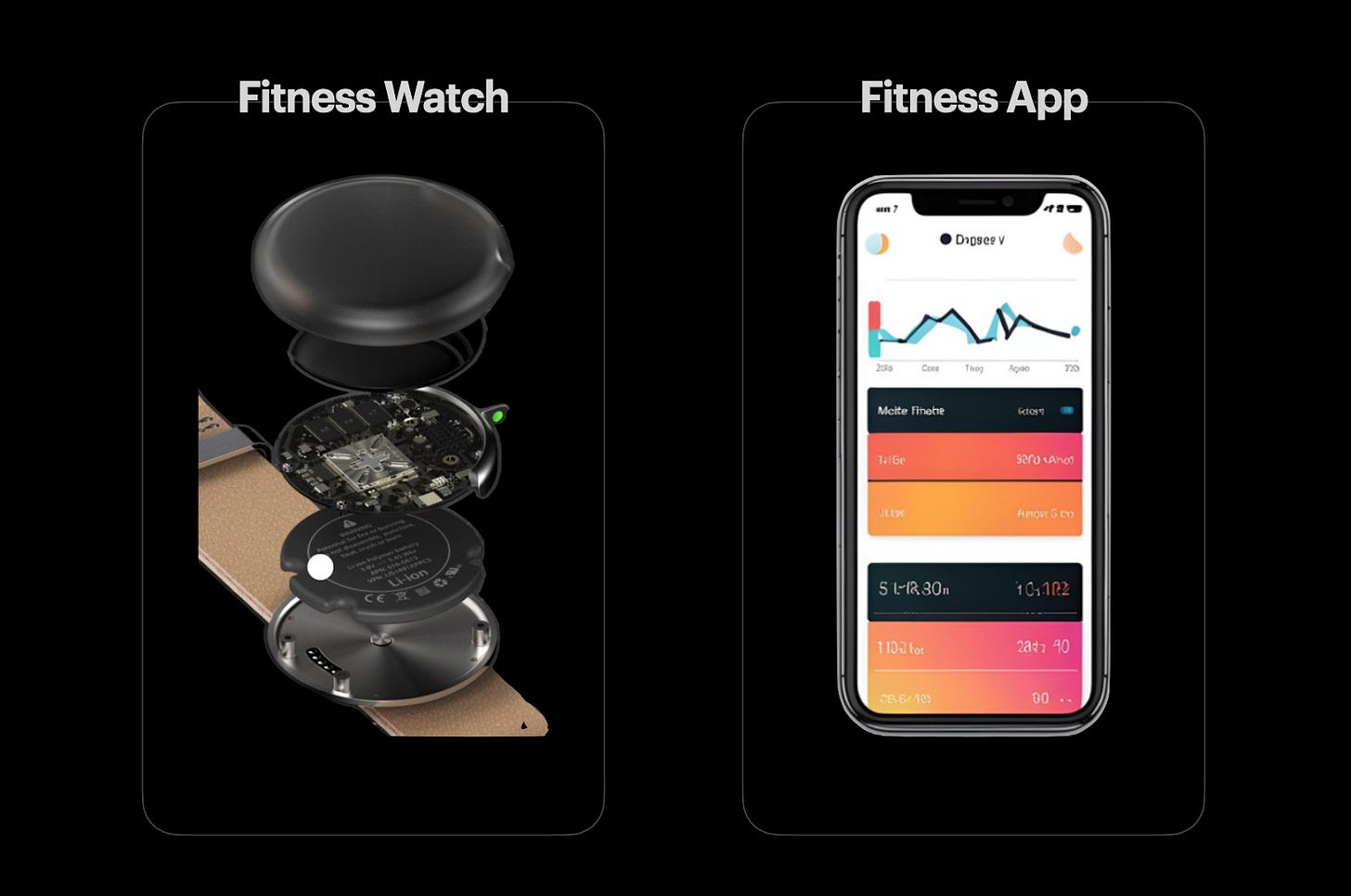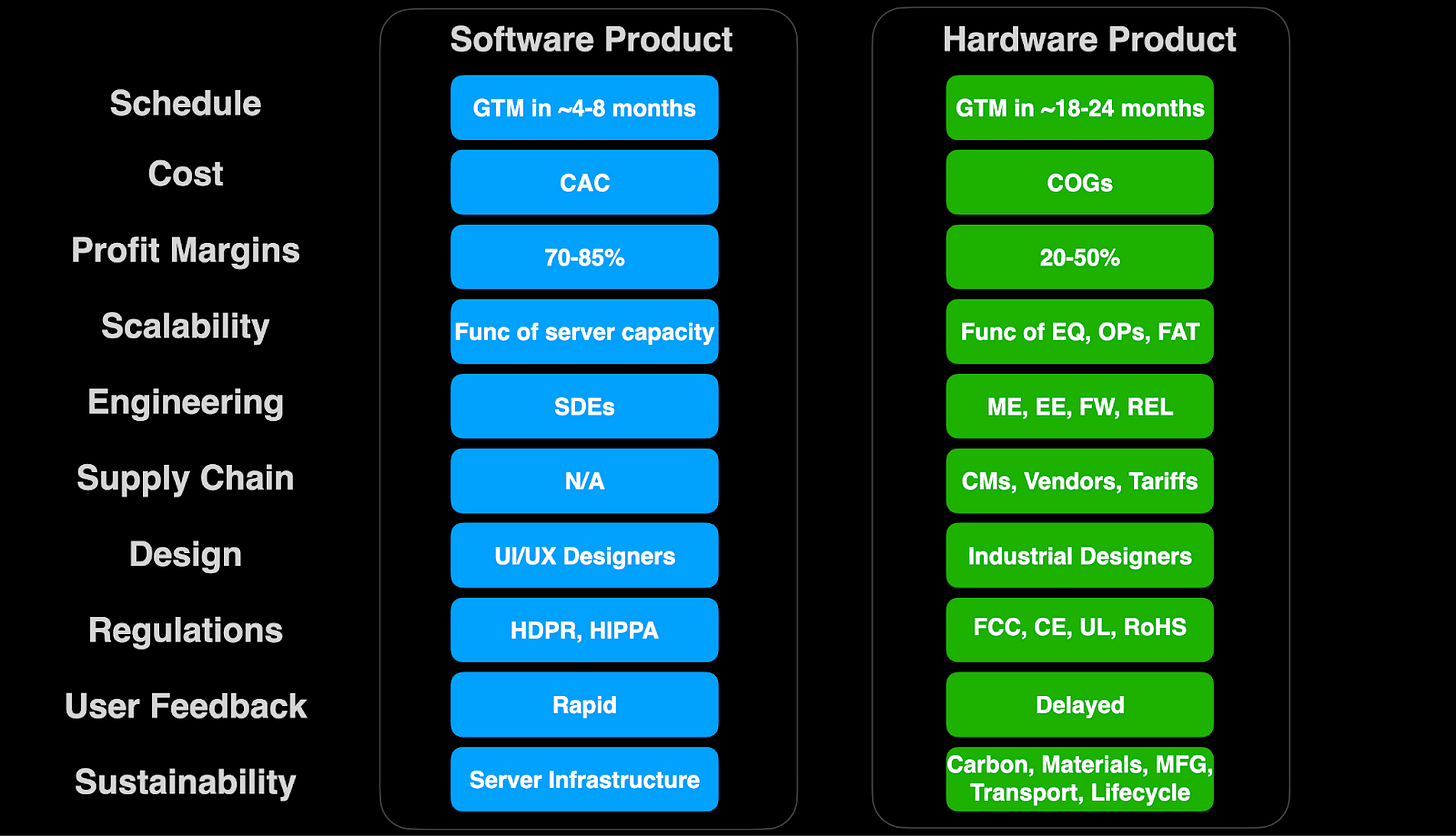Readers of this newsletter know I got my start in product management building products (Kindle Keyboard, Kindle DX, Kindle Fire) that brought together hardware + software seamlessly. And as a “software PM” working on apps and services that benefited from an amazing hardware platform, I have tremendous respect for the craft of “hardware PM-ing”. Which is why I’m excited to have
doing a guest post on Run the Business today! In this article, he covers all the basics of HW PM-ing and paints a contrast around complexity when compared to building software. Please share this post and subscribe to his newsletter: Building Hardware!What is hardware PMing anyways?
When I think of great people in hardware, Tony Fadell always comes to mind. As the inventor of the iPod, iPhone, and Nest Labs, he states that hardware PMs should figure out what the product should do, create the spec, work with every part of the business, and most importantly be the voice of the customer.
While that definition doesn’t really differ from other PM domains, I find that the hardware community is lagging behind the software world when it comes to PMing and knowledge sharing. There’s a lot of great material about how to build apps and SaaS products.
In contrast, the hardware landscape is fragmented. You’ll find blogs on mechanical or electrical engineering and separate posts from MBAs on supply chain sourcing strategies. But there aren’t many resources for learning how to build a 0 to 1 hardware product, involving both the technical and business sides of things.
There’s a barrier to entry for hardware and while there are many reasons for this, I think one of them is the education around unique challenges to physical product development such as:
Needing access to a lab, factory, and capital intensive equipment for prototype builds
Low gross margins (~20-45% consumer electronics, ~5% automotive)
Manufacturing at scale, without variations, and meeting safety standards is orders of magnitude more difficult than simply designing a concept
Long lead times for user feedback
Timelines being strict given that the cost of feature changes after dev commit is immense
Need for international travel and on the ground factory presence
And the list goes on. But hardware products also change the world. There’s a special feeling in designing, crafting, fabricating, and using a physical product. In this post I'm going to attempt to articulate some challenges in contrast to SW PMing.
How is it different from SW PMing?
Its difficult to illustrate what differs in the hardware space without providing an example. Let's talk about a scenario where a PM team has to develop two products in identical domains.
We’ll explore a fitness focused smart watch and a health tracking app. The target users for both are health conscious millennials who are middle class earners. Let's also assume they’re struggling with motivation and value frugality as a purchasing trait.
Friendly disclaimer before we start, I’m aware that there are biases towards hardware development in the points below. Software is undoubtedly complex, nuanced, and challenging as it is but hey I was never good at coding anyways, so let's start.
Source: Yanko design, Canva
Schedule
App: For starters the app may be developed using an agile framework and relative flexibility. A patch can be quickly deployed to fix bugs or changes with the exercise goal setting feature.
Watch: To mass manufacture this watch without variation or safety issues we’ll need to lock scope sometimes years before launch. Waterfall is a must once dev commit is reached and agile will only be used for early proof of concepts. Why? Well, if a PM wants a new feature post PRD lock, like motion tracking, then our engineers will need to add sensors (accelerometers). This will impact our PCB design (printed circuit board) and mechanical housings, resulting in schedule delays from the added time to remanufacture tooling and perform reliability testing.
Cost & Profitability
App: The app will focus more on customer acquisition costs like digital marketing, user support, and server maintenance. It’ll also have higher margins (~70-85%) due to low incremental cost per user after development.
Watch: Our watch will focus on component costs such as the display, battery, sensing, chipset, & enclosure - called BOM cost (Bill of Materials). This is in addition to the headcount needed for assembly, material attrition, shipping, tariffs, and packaging. It’l have lower margins because of manufacturing constraints. Gross margins are usually ~20-50% in consumer electronics.
Scalability
App: Adding new users will generally be a function of server capacity which is usually cost effective and relatively attainable.
Watch: Scaling will be orders of magnitude harder. Going from 1K to 50K units will require CapEX into fixturing, tooling, FAT (factory acceptance testing), metrology, QC, SOPs, and assembly OP training to ensure we have a variation free process. After having worked in automotive, IoT, and consumer electronics I have never had a smooth ramp into mass production. Something always breaks - whether it’s a machine, process, test, or design. And that’s okay.
Engineering Iterations
App: Teams will generally have fluid sessions for system architecture, dev work, debugging, and data analysis. For this app a new calorie tracking feature can be deployed relatively quickly after dev/QA.
Watch: The greatest challenge will be the inability to rapidly prototype and gain design feedback. For example if we want to test waterproofing, we’ll have to wait weeks to ensure the chipsets, seals, & housings are at the latest design and production maturation level. Also get used to working with mechanical, electrical, and firmware engineering teams.
Supply Chain
App: We’ll rely on cloud services for managing server load and app stores for distribution to our customers.
Watch: This will require navigation of supplier sourcing, contract manufacturers, inventory, tariffs, logistics, and build volumes. There’s also significant on the ground travel from business and technical teams. For example, the watch’s leather band could be sourced from Mexico, ICs from Taiwan, display from South Korea, housings from China, and final assembly in India.
Design
App: Our feel, aesthetic, and usability will be developed by UI/UX designers through various wireframes and digital mockups. Choosing one concept over another can be done fairly quickly with A/B testing.
Watch: Cosmetics and form factor will be led by the industrial design team. Industrial designers are basically artists with a great intuition of technology and manufacturing processes. They’ll ideate on concepts for CMF (colors, materials, finishes). Validating these will be expensive and time consuming given the need for machine shop tools and 3D printing.
Regulations
App: At minimum we’ll need to meet GPPR and HIPAA to ensure customer data is secured and encrypted.
Watch: We have to comply with regulatory standards like CE for safety compliance and FCC for electronic emissions. Ensuring the smart watch doesn’t emit harmful radiation and complies with electrical standards might take months of testing and design changes.
User Feedback
App: Feedback can be logged from usage analytics and fixes can be deployed rapidly on UX issues like slow load screens or non intuitive menu selection.
Watch: There’s more friction involved in gaining customer insights because we can’t just press a button for new feature releases. We’ll need to issue minimum order quantities to our contract manufacturer, run units down a production line, and ship physical prototypes (likely across the pacific ocean) to our alpha and beta testers. It's vital for our users to have tangible, hands-on experience with the watch to detect issues with heart rate monitoring, comfort, or weight.
Sustainability
App: While there isn't really a direct correlation to carbon emissions from the app, there will be an implicit impact from the supporting infrastructure like servers, cooling, and data center equipment.
Watch: We’ll have to make design decisions to ensure environmental compliance within the watch itself. For example will we use aluminum instead of steel for the chassis so that it’s recyclable? For the inner frame can we try reused plastic? In theory sure, but in reality this will compromise mechanical properties and will be more expensive. Let’s also not forget carbon emissions in the overall production, shipping, and lifetime usage.
Given that great products provide compelling experiences by leveraging both software and hardware harmoniously, we have many opportunities to converge as builders in the physical and digital worlds.
Takeaways
If you’re new to building hardware products - whether it's for a startup, an ask from leadership, a personal interest, or just plain curiosity - I’m hoping this post helped shed light into our world.
At least on a surface level, you can have a sense of what to expect and how to gauge feasibility. We talked about paint points such as the added scope required to de-risk product development teams.
Remember that making physical devices generally takes longer, is capital intensive, requires navigation of unique engineering constraints, is lower margin, introduces a new variable in working with supply chains, and is more abrasive when it comes to getting user feedback.
Finally, one concept which summarizes HW PMing is “Genba”, a Japanese lean manufacturing term which means actual place. Whether it's testing units in a lab, walking the production floor, or having prototypes in our hands we can’t just rely on a picture, email, or videos for updates. In the physical device world we need to be intimately involved with the products we build.
further reading / references
if you’d like to read my entire catalog of posts about my time working on the Amazon Kindle family of devices, you can find that here
if you’d like to read more by Building Hardware, check out some of his greatest hits here, including Holistic Hardware Development Process, Hardware 101 - How Things Go Together (an iPhone teardown showing how hardware components enable software features), and Why We Need HW PMs
If you enjoyed this collaboration, check out my recent chat with the Head of Product at ARENA on The Convergence of Hardware & Software PMs for Connected Devices
Some additional resources on building great hardware products and HW PM-ing: Build (by Tony Fadell), What is Hardware Product Management?, and Hardware Product Management Frameworks for Startups






Love the article, thanks